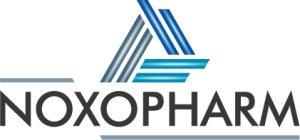
Posted: 4 September 2024
Innovative biotech company Noxopharm Limited (ASX:NOX) is pleased to announce substantial progress on its Chroma™ technology platform, with encouraging brain cancer results plus early work on leukaemia.
Glioblastoma is the most frequent and lethal type of brain cancer, accounting for two-thirds of all Australian brain cancers. It remains an incurable disease with a median survival time of just 15 months after diagnosis. Today there are only a few treatment options available, and after initial treatment recurrence of the disease is almost inevitable.
The global glioblastoma market was worth around US$2.9 billion in 2022 and is expected to grow at an annual rate of 8.8%.
Running in parallel with the company’s Sofra program, the Chroma drug development program focuses on generating promising novel anticancer drugs. Its growing drug library represents a structured pipeline to build value in the portfolio and supports the company’s wider strategy of developing novel drugs in areas of substantial unmet need in order to create future commercial opportunities.
Using a rational drug design approach and following functional initial screening, Noxopharm has now identified early drug leads with anticancer activity for both glioblastoma and leukaemia.
Targeting brain cancer
In relation to glioblastoma, Noxopharm and the University of South Australia (UniSA) recently received a $100,000 grant from Tour de Cure to conduct preclinical work on two novel first-in-class drugs developed via Noxopharm’s Chroma platform.
These drugs have now been tested on an extensive biobank of patient-derived tumour explant organoids (GBOs), a state-of-the-art glioblastoma explant model established by Dr Helen Palethorpe and Professor Guillermo Gomez at the Centre for Cancer Biology, UniSA.
GBOs are generated from tumours surgically excised from actual brain cancer patients, thereby maintaining the three-dimensional architecture and complex microenvironment composition of human brain tumours, and providing a realistic environment for drug testing.
Dr Palethorpe said: “Methods to generate and biobank patient-derived explants are very time consuming, technically demanding and time sensitive. We have established and finessed a highly sophisticated method for generating and biobanking these explants, which is essential to maintain the original tumour composition for preclinical testing of novel compounds developed by the Chroma drug development program.”
The figure below shows that two novel drugs developed from the Chroma platform, known as CRO-70 and CRO-71, significantly reduced the growth of these glioblastoma explants by an average of 75.94% and 75.87% respectively versus the untreated controls. The four asterisks represent a p-value of less than 0.0001, indicating highly statistically significant results.
Preliminary analysis of CRO-70 and CRO-71 also demonstrated that these drugs could cross the blood-brain barrier, which is an important protective filter for the brain that most drugs do not manage to cross.
Finally, an early animal study resulted in a favourable safety and toxicity profile for both drugs, which Noxopharm and the UniSA research team will now further investigate as studies continue over the coming months.
Novel leukaemia drug
As a further sign of the maturing Chroma platform, the Noxopharm team has identified a novel drug that specifically targets a gene mutation found in Acute Myeloid Leukaemia (AML) that arises during current standard-of-care treatment. As a consequence of this mutation, the cancer becomes resistant to standard-of-care drugs.
Early findings show the novel Chroma drug candidate can overcome this common problem of drug resistance, which can happen any time during or after the treatment. Drug resistance is especially relevant in AML because the disease often returns aggressively after initial treatment.
AML is a type of blood cancer that represents around 40% of all new adult-onset leukaemias in Australia and was the leading cause of leukaemia-related deaths in 2020. It has a median overall survival rate of around 25% five years after diagnosis, and an incidence rate of approximately 20 people per 100,000 in those over 65 in Australia. There is a significant need to develop new treatments for AML, particularly those targeting cancerous leukaemic cells while sparing non-cancerous healthy cells.
Noxopharm CEO Dr Gisela Mautner said: “We are building momentum in the Chroma platform with these results, broadening it out to target glioblastoma as well as explore blood cancers like leukaemia. We intend to progress this research and work closely with the world-class team at UniSA to generate new data and understand these first-in-class drugs more deeply. This is very worthwhile when there is clearly a great need for new approaches, and having several promising drug candidates in simultaneous development also increases commercial opportunities.”



